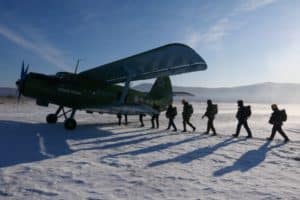MIL-STD-810 Method 502 Low Temperature
Micom is pleased to offer MIL-STD-810 Method 502 Low Temperature testing services to our customers. As an A2LA ISO 17025 accredited laboratory, we can perform many of the test methods necessary to qualify your product to MIL-STD-810.
About MIL-STD-810 Test Method 502
MIL-STD-810 Test Method 502 is a test standard designed to evaluate the effects of low temperature on material safety and integrity during storage, operation, and manipulation. Note that very few companies can perform this type of test since it is quite unique. It is mainly designed to test the operation of computer equipment at base temperatures. It is applicable to materials that should be deployed in low-temperature environments. Such a test can evaluate for instance:
- Change of burning rates
- Stiffening of shock mounts
- Loss of lubrication and lubricants flow due to increased viscosity
Procedure For MIL-STD-810 Low Temperature Testing
 This test encompasses three different procedures:
This test encompasses three different procedures:
- Procedure I: evaluate effects of low temperatures during and after storage
- Procedure II: how does the material operate under low-temperature conditions
- Procedure III: manipulation by heavy, cold-weather clothed personnel
Procedures should be wisely chosen depending on multiple factors such as:
- Purpose of the material
- Natural exposure circumstances
Climatic conditions are then chosen based on the world areas in which the material will be used. If a material happens to be used worldwide, the choice must be made on the frequency of a given cold condition. A table is given below that lists temperature ranges with respect to the location:
Table Method 502 Summary of Low-Temperature Cycle Ranges
| Design Type | Location | Temperature | |
| Ambient Air °C (°F) |
Induced Environment (Storage & Transit) °C (°F) |
||
| Basic Cold (C1) | Most of Europe; Northern contiguous US, Coastal Canada; High-latitude coast (e.g., southern coast of Alaska); High elevations in lower latitudes |
-21 to -32 (-5 to -25) |
-25 to -33 (-13 to -28) |
| Cold (C2) | Canada; Alaska (excluding the interior); Greenland (excluding the « cold pole »); Northern Scandinavia; Northern Asia (in some areas); High Elevations (Northern and Southern Hemispheres); Alps; Himalayas; Andes |
-37 to -46 (-35 to -50) |
-37 to -46 (-35 to -50) |
| Severe Cold (C3) | Interior of Alaska; Yukon (Canada); Interior of Northern Canadian Islands; Greenland ice cap; Northern Asia |
-51 (-60) |
-51 (-60) |
Download complete information on MIL-STD-810 which includes method 502 (PDF)
How is MIL-STD-810 Temperature Testing Performed Based on Climate Conditions?
The specimen is put in the climatic chamber in its respective configuration (storage/operation/manipulation) at a temperature rate of 3°C/min. Temperature stabilization is then made depending on the chosen procedure. Complementary steps are then executed with respect to each procedure, followed by visual inspections.
Moreover, this test includes multiple temperature cycle ranges to imitate temperature conditions in different locations.
This method consists in placing samples in a chamber and operating temperature cycles for an amount of time discussed by both parties.
We invite you to consult the other methods we offer that are related to chamber testing: Accelerated Aging, Temperature and Humidity Cycling Tests, Thermal Shock, Heat Aging, Coating Testing, Polymer Testing.

